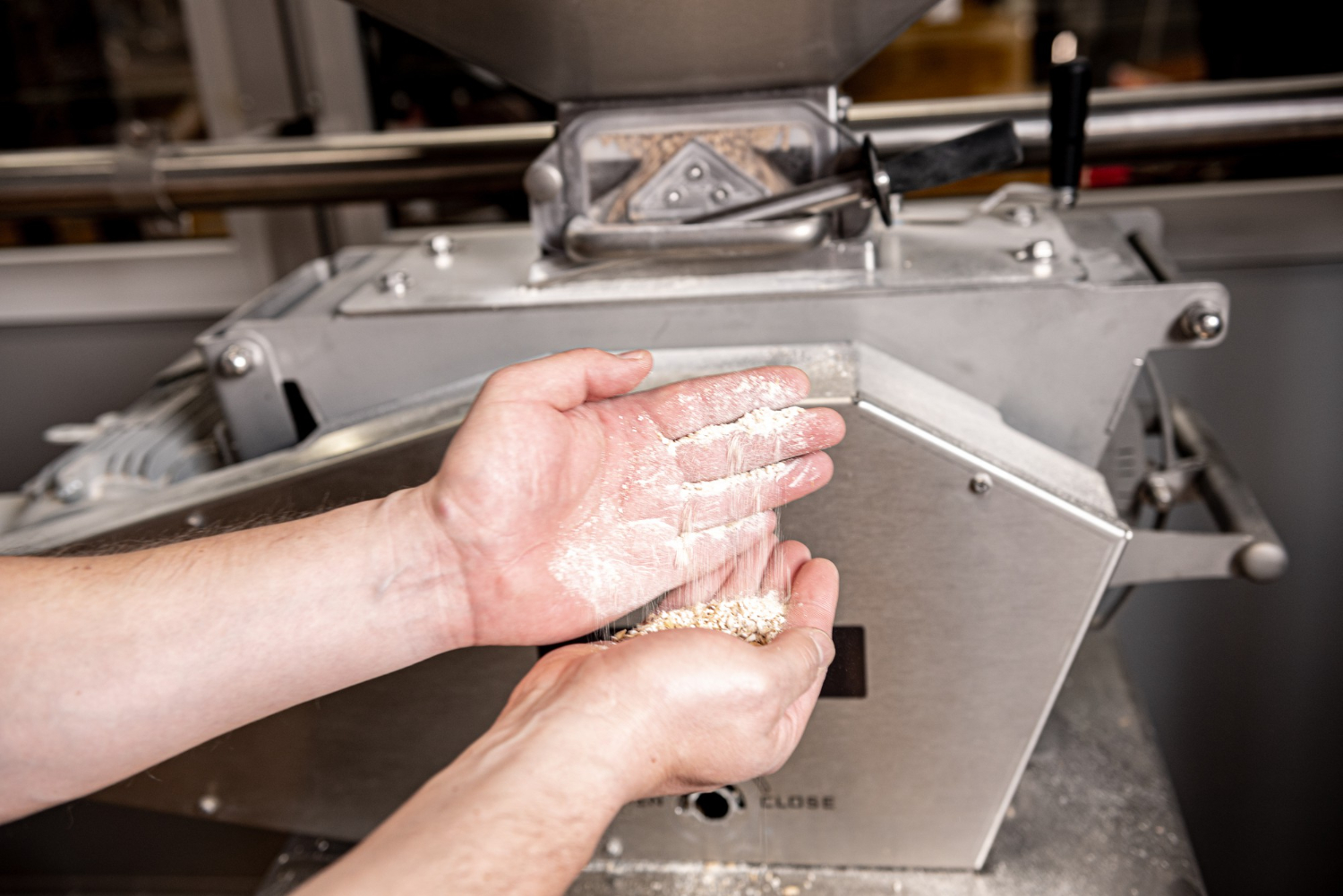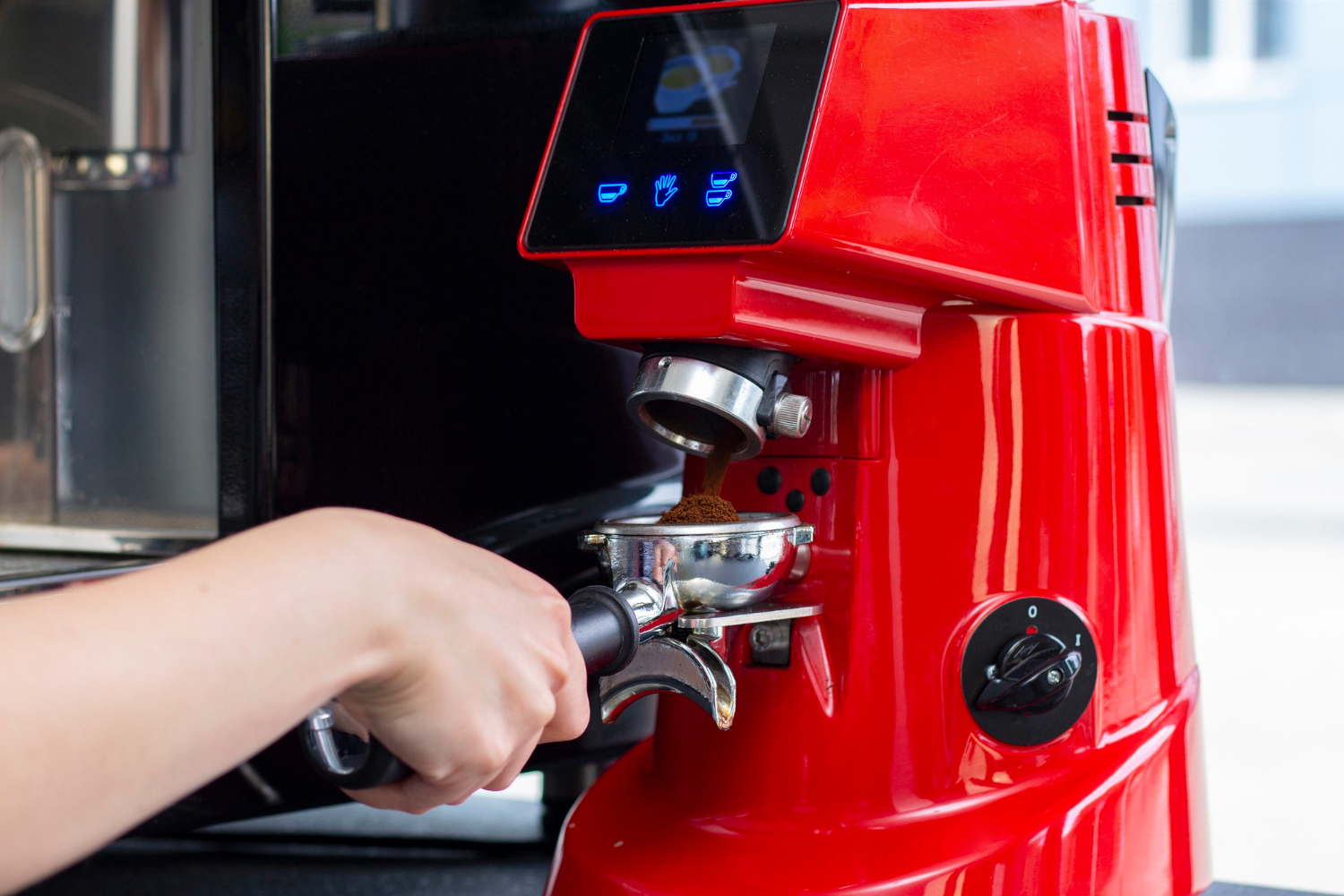It’s not entirely surprising to know that there are many things other than coffee that can be ground up with a coffee grinder.
Do you want a cheap way to grind all your wheat, rice, beans, oats at home? Unfortunately, it can be costly for many people to buy a 300-buckle grain mill only to grind your wheat or rice occasionally. But in this COVID-19 pandemic, there’s a particular risk to run to the store to get some milled flour.
Coffee is a drink used for several purposes, from picking me up in the morning to a delicious warm drink during the day. There is, therefore, a multitude of coffee types that can meet the needs of all coffee lovers. However, not everyone knows how to get this perfect taste from a cup of coffee, which includes all its aromas.

Can I Use a Coffee Grinder to Mill Grain?
The grinder is tasked with the all-important function of extracting aroma and flavor from coffee beans to make delicious, high-quality coffee. In most cases, the grinder is the crucial aspect of the equation, even though the coffee maker is the star of the show most people believe.
Your daily use of coffee grinding is not an excellent option for grinding wheat, rice, nuts, seeds, peas, and spices. Grinders cannot turn this type of grain into fine flour.
Of course, a grain mill is different. All types of grain, including wheat, pasta, rice, peas, corn, nuts, seeds, beans, and spices, may easily and quickly grind to a reliable and quality grain mill. It will take only a few minutes to achieve coarsely milled flour.
If you don’t mind having less than stellar flour to make small quantities of bread, there is no reason not to experiment with a grinder for flour. Just keep in mind that a coffee grinder is a cheaper way to make delicious, homemade bread. Just grind the grain in small quantities to prevent you from jamming your grinder. A coffee grinder can usually handle about one cup of grain. Coffee grinders cost less than $20, so it’s an excellent way to try fresh ground wheat before you invest in a grain mill.
You can use the coffee grinder to grind the flour if you do not have the option of using a compact, conventional flour mill. The results may vary according to the quality and type of the blade in your coffee grinder. You should also remember that coffee grinders will not produce the characteristically sweet flour ordinary in commercially milled flours. Moreover, it may take several attempts or rounds of grinding to make the right texture or the texture of your liking.
Can You Mill Malt in A Coffee Grinder?
Homebrewing is an art that allows as much or small a craftsmanship of DIY as you want. Everything you choose can be customized to the grains forming your mash. And regardless of whether you are brewing or brewing extracts, you can adjust your perfect beer by crushing malts at home.
If you are brewing all-grain, a coffee grinder and food processor are undoubtedly practical and affordable alternatives. But they also tend to grind your husks and pulverize the grain.
With a grain mill, you can reduce the dimensions of your mash quickly. Grain mills work by crushing the grain between two plates rotated by hand or electronically when turned.
You can get a grain mill, but they tend to break the husks and the rest of the grain into particles that are far smaller for making malt. And since smaller husk particles mean fewer streams across the grain bed, you are on the way to a possible sparge if you over-mill your grain.
One way to make up for this is to spend a few more dollars on a little more malt. This is because more grain offsets the reduced number of starches that the grain releases during the mash.
Can You Use a Coffee Grinder to Grind Wheat Berries into Flour?
Grain mills are a little expensive compared to coffee grinders, although they are very efficient in grinding all types of grains, spices, herbs, nuts, and seeds.
If you have no grain mill and still want to grind some nice grain, you may use your coffee grinder in the meantime.
If a coffee grinder is not an option, you can still purchase it online at a very affordable price. The best coffee grinder to grind grains at home is a conical burr grinding engine. There are two general classes of coffee grinders in the market. Blade grinders tend to introduce more speed into the equation, but they are notorious for introducing random heat cavities. Heat cavities can affect the resulting powder of not just coffee beans but also wheat flour.
Can You Use a Coffee Grinder to Grind Corn?
Two cups of rough mill take five minutes of steady muscle work using a manual coffee grinder. Of course, the duration is drastically reduced if you have an automatic coffee grinder at home. It may also take several attempts to crush your maize, minus the usual bumps that can also be seen if you end up using a table blender instead of a coffee grinder. However, there is a high risk that your coffee grinder will be obstructed and damaged due to the constant grinding of hard grains such as maize.
Grain mills have robust and highly durable stainless steel surgical blades that efficiently grind to fine powder all grain types.
The excessive moisture content of maize may also be an issue, as coffee grinders do not work well with moisture and tend to form clumps if the ingredient being ground has water or high moisture content. Humidity is also known to rust both manal and automatic coffee grinders. The best option is to buy a coffee grinder advertised as a spice grinder to get better results. Spice grinders are designed to tear down plant matter into minor bits, whereas coffee grinders are expected to produce fine powder for making coffee. Sometimes, the individual grains aren’t even that small, as some people need a medium to coarse grounds for making the coffee they like.

